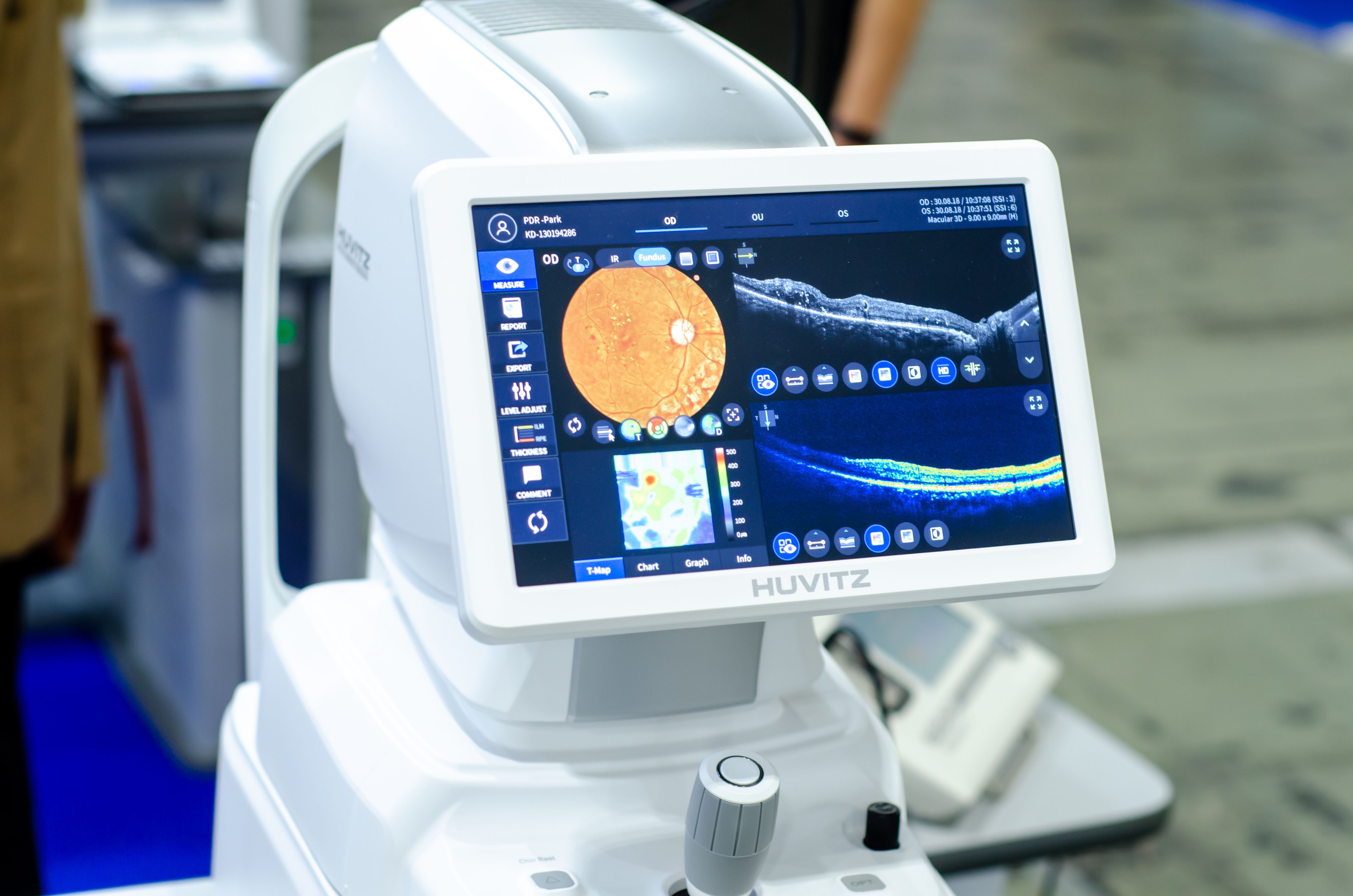- Case-Based Roundtable
- General Dermatology
- Eczema
- Chronic Hand Eczema
- Alopecia
- Aesthetics
- Vitiligo
- COVID-19
- Actinic Keratosis
- Precision Medicine and Biologics
- Rare Disease
- Wound Care
- Rosacea
- Psoriasis
- Psoriatic Arthritis
- Atopic Dermatitis
- Melasma
- NP and PA
- Skin Cancer
- Hidradenitis Suppurativa
- Drug Watch
- Pigmentary Disorders
- Acne
- Pediatric Dermatology
- Practice Management
- Prurigo Nodularis
- Buy-and-Bill
News
Article
Optical Coherence Tomography in Preoperative Mapping of BCC: A Novel Approach to Optimizing Mohs Micrographic Surgery
Author(s):
Study findings suggest OCT's effectiveness in accurately diagnosing and mapping BCC, with a high predictive capability for Mohs surgery requirements.
Mohs micrographic surgery (MMS) stands as the pinnacle for treating high-risk cutaneous basal cell carcinoma (BCC). Yet, its unpredictability in determining the number of stages required and the size of the final defect, combined with its cost and time consumption, challenges its widespread use. A recent study explored the potential of optical coherence tomography (OCT) as a preoperative tool to delineate BCC borders, aiming to reduce MMS stages and resultant defects. Investigators' findings suggest OCT's efficacy in accurately diagnosing and mapping BCC, with a high predictive capability for MMS requirements.1
Investigators’ Introduction
BCC diagnosis primarily relies on biopsy and histopathologic examination. Current diagnostic tools like handheld dermoscopy and reflectance confocal microscopy (RCM) offer high accuracy but falter in estimating lesion size and depth. Optical coherence tomography (OCT), a non-invasive imaging technology, provides real-time, cross-sectional images, aiding in detailed skin tumor examination.
With its robust diagnostic accuracy ranging between 80 to 90%, OCT has emerged as a promising tool for BCC diagnosis, offering improved sensitivity and specificity. Recent studies have identified typical malignant OCT features, paving the way for standardized image interpretation and reduced observer variability. However, its potential in optimizing MMS remains underexplored. Study authors wrote, “Prior studies have found that OCT is accurate and can improve the sensitivity and specificity of diagnosing BCC over clinical or dermoscopic evaluation alone.”
Methods
A prospective study enrolled 25 patients with BCC undergoing MMS. Prior to surgery, OCT mapped lesion borders, with images compared to histopathology for agreement. “The first macroscopic demarcation of the lesion occurred with the naked eye by the Mohs surgeon, guided by dermoscopy where necessary. A margin of 2–3 mm was then drawn around the lesion by the same Mohs surgeon using a sterile marking pen. The width and length of this first marking were measured in millimeters and recorded as the dimensions of the ‘clinically-defined margin.’ Theclinically-defined margin was then divided into distinct sections for OCT imaging by placing a mark at 12 o’clock, 3 o’clock, 6 o’clock, and 9 o’clock. For larger lesions,additional clock hours were marked as indicated to provide full coverage,” researchers wrote.
Once all OCT images were captured, they underwent despeckling. A blinded group of 3 non-dermatology experts assessed the images to determine the presence or absence of tumor characteristics based on the criteria established in the 2022 European consensus. OCT's ability to predict MMS stages and diagnose BCC was assessed, revealing promising results in both areas.
Results
From October 2021 to March 2022, 25 patients with biopsy-confirmed, untreated BCC scheduled for Mohs micrographic surgery were included in the study. Three patients were excluded due to errors in slide preparation causing folding, which affected the histopathological analysis accuracy. Excluding these cases, the study involved 22 patients with a total of 22 lesions.Histopathologic analysis revealed a total absence of BCC in 32% of MMS specimens post-biopsy, correctly predicted by OCT in 86% of cases. For tumors requiring single or double MMS stages, OCT predicted the need with 78% and 83.3% accuracy, respectively. Overall, OCT demonstrated 95.5% accuracy in diagnosing BCC at the lesion center.
Discussion
MMS offers unparalleled benefits in BCC treatment but presents challenges in predictability and cost-effectiveness. Investigators wrote, “In 2017, the total Mohs expenditure paid by Medicare Part B alone was over $537 million, which represented a steady increase from total expenditure in 2014. As the incidence of BCC continues to rise, this number is likewise projected to increase. It is therefore of great interest to decrease the overall cost of MMS and wait-times for MMS, and one projected method of doing so is by reducing the number of procedural stages.”2
OCT, with its ability to define tumor margins, emerges as a potential solution to these challenges. This study underscores OCT's promise in preoperative mapping, potentially reducing MMS stages and minimizing surgical defects.
The study also highlights the significance of BCC subtype in OCT diagnosis, with nodular subtypes showing higher diagnostic accuracy. Though promising, OCT is not without limitations, including increased tissue excision in false positive cases and incomplete imaging in certain tumor locations. Combining OCT with other imaging modalities like dermoscopy could address these limitations.
Study authors wrote and concluded, “We anticipate that histopathologists will be the key interpreters of OCT data—thus, histopathologists could in the future look at tissue slice-equivalents (OCT images) rather than looking at tissue slices directly. To fully establish the application of OCT in MMS, the resolution of OCT should also be greatly improved. In ongoing research, including in our group, the capability of OCT to produce histology-grade images for use in pathology labs is being explored. In the future, we hope that this technology will be able to reduce the discordance rate among pathologists.”
References
- Akella SS, Lee J, May JR, Puyana C, Kravets S, Dimitropolous V, Tsoukas M, Manwar R, Avanaki K. Using optical coherence tomography to optimize Mohs micrographic surgery. Sci Rep. 2024 Apr 17;14(1):8900. doi: 10.1038/s41598-024-53457-7. PMID: 38632358; PMCID: PMC11024158.
- Puri P, Baliga S, Pittelkow MR, Bhullar PK, Mangold AR. Use of skin cancer procedures, Medicare reimbursement, and overall expenditures, 2012-2017. JAMA Netw Open. 2020 Nov 2;3(11):e2025139. doi: 10.1001/jamanetworkopen.2020.25139. PMID: 33170260; PMCID: PMC7656278.






